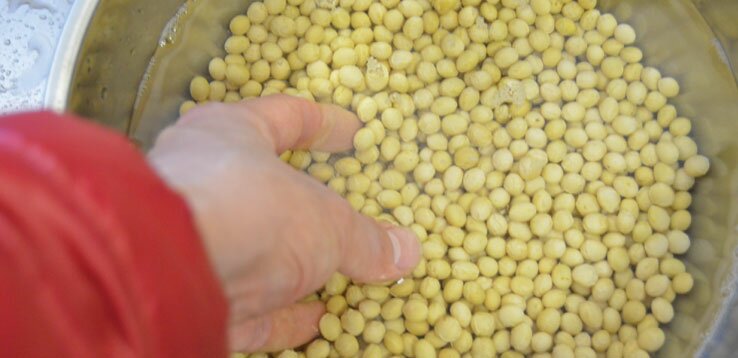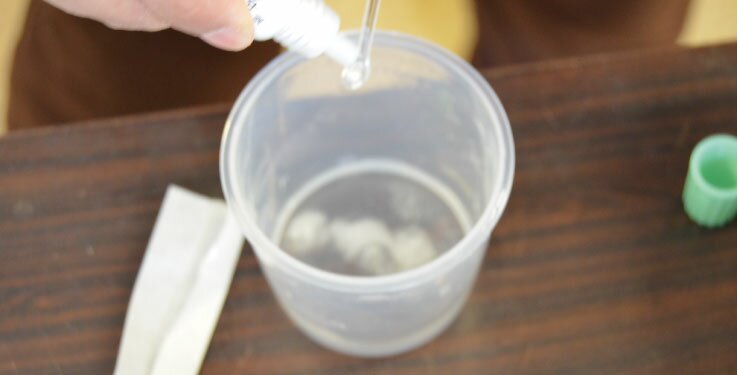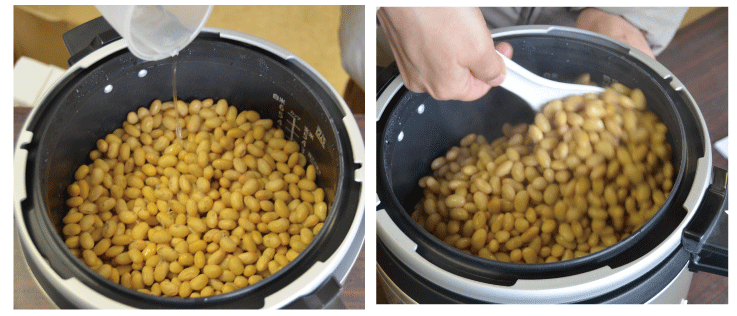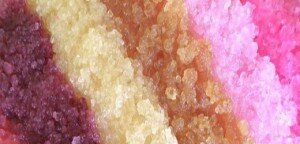How to Make Natto…Natto Kin From Spores
What is Natto?
Nattō (なっとう or 納豆?) is a traditional Japanese food made from soybeans fermented with Bacillus subtilis var. natto. Some eat it as a breakfast food. Nattō may be an acquired taste because of its powerful smell, strong flavor, and slimy texture. In Japan, nattō is most popular in the eastern regions, including Kantō, Tōhoku, and Hokkaido.
Before Making NATTO:
- Be sure the entire processing area is cleaned for production. Make sure all utensils, pots, cheesecloth (FUKIN), etc. are as sterile as possible. (Boil utensils for 5 minutes prior to using.)
- The packet of NATTO spores comes with a special small spoon; be sure to use the small spoon to measure the appropriate quantity for the recipe.
- The fermentation process requires the NATTO be kept at approximately 100°F (37°C) degrees for 24 hours. Ovens with a low temperature setting can be used, an oven w/ light on only, or inoculate in large cube-shaped food dehydrators.
- NATTO is quite odorous while fermenting, and you may want to isolate the fermenting NATTO during this time.
Ingredients and Supplies
needed for Making NATTO:
- 2 pounds (900g) soybeans (about 4 cups)
- 10cc water, boiled for 5 to 10 minutes to sterilize
- One spoonful (0.1 g.) NATTO-kin spores (use the special spoon that came with the packet)
- Cheesecloth or butter muslin (FUKIN in Japanese)
- Non-reactive pot (i.e., stainless steel, enameled, ceramics, etc.) or Pressure cooker
- Large stainless steel, wood, or plastic spoon or spatula
- 3-4 oven-proof glass containers with lids
Instructions for Making NATTO:
– Wash the soybeans using running water to gets rid of tiny dirt or dead skins off the beans.
 – Soak with clean water for 9 to 12 hours (longer soaking time recommended during colder months). Be sure to use approximately 3 parts water and 1 part soybeans to allow for expansion. You will end up with 8 to 12 cups of beans.
– Soak with clean water for 9 to 12 hours (longer soaking time recommended during colder months). Be sure to use approximately 3 parts water and 1 part soybeans to allow for expansion. You will end up with 8 to 12 cups of beans.

– Drain the beans from the soaking water. Place beans in a large pot with mesh bowl and pour in water. Steam it for 3-4 hours.
Or fill with water and boil 5-6 hours.
The recommended way is to use a “Pressure cooker”, that can be cooked faster than in a normal pot. Please refer to the pressure cooker instruction manual for operation guidelines.

– Drain the cooked beans and place in a sterilized pot. Dissolve 1/5 special spoonful of NATTO spores (0.1g) into 10cc of sterilized water.

– Immediately pour the NATTO spore solution over the beans while the beans are still warm but not hot to the touch. Stir the beans and water mixture together carefully using a sterilized spoon/spatula.

– Place a thin layer of beans in each of the 3 to 4 containers. If at any point during the process some beans are spilled on the counter, etc., discard the spilled beans as they can contaminate the other beans if added back in to the batch.

Place the sterilized cheese cloth over the top of the containers and place the tight-fitting lid over the cheese cloth. Preheat the oven, dehydrator, or KOTATSU Japanese Warmer to 100°F (37°C). Place the covered containers in the oven, dehydrator, or warmer and allow the NATTO to ferment for 24 hours being sure to keep the temperature steady at 100°F (37°C). Check the temperature throughout the day/night.
 At the conclusion of the fermentation period, let the NATTO cool for a couple of hours, then remove the lid and the cloth, replace the lid, and store the containers in the
At the conclusion of the fermentation period, let the NATTO cool for a couple of hours, then remove the lid and the cloth, replace the lid, and store the containers in the
refrigerator at least overnight.
NATTO can also be aged
in the refrigerator for 3-4 days. Smaller portions of finished NATTO can be stored in the freezer and thawed for later use.
Happy Culturing!
Looking for Fresh Natto spores? Right from Japan? We have connection for fresh spores(3g)…right here !
Happy Culturing ! Live, Grow, Share Cultured Foods.



